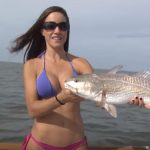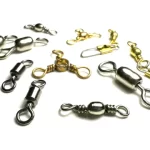Starting with the right gear greatly increases the chance of success for young anglers who are getting started in fishing. In general, I recommend starting with simple gear that is inexpensive and very easy to use. These simple rigs teach the basic skills of fishing without many frustrations and can handle moderately big fish, yet it’s not a big deal if an accident happens and they are broken or lost.

As anglers increase their abilities, there are a couple of basic setups to smoothly make the transition to master all types of equipment.
Spincast Reel and 5½-foot to 6-foot Medium-Power Rod: Ask any pro or weekender, and this is where 95 percent of us started, including me. Zebco models 33 and 202 are the classics that many of us used, and they are still available, as are a lot of similar reels. Many come paired with a rod already, with about a 5½-foot rod being the right size for a Cub Scout and a 6-footer being better for the average Boy Scout. For mostly smaller fish like bluegill, crappie, perch and small trout, try 6-pound monofilament, or select 10-pound mono if you’re after bigger fish like catfish, carp, bass and walleye. While this is generally considered beginner gear, friends and I landed numerous catfish and carp from 5 to 10 pounds with these as kids, some considerably larger.
Spinning Reel and 6-foot to 6½-foot Medium-Power Rod: Sometimes called “open face,” spinning reels excel at casting light- to moderate-weight baits (1/16 to ½ ounce). Once an angler has learned a good release point to get a long cast with a spincast reel, he is ready to step up to a spinning reel. These reels cost a bit more, but you get more durable gears and smoother casting and retrieving, which allows for more precision and better feel. Like the spincast reel, 6- to 10-pound mono works great for most situations, or you can easily upgrade to 20-pound braided line and be ready for big fish around heavy cover like logs, lily pads and docks. For almost all species except for really big predators like muskie and pike, skilled anglers use spinning gear for small finesse presentations when the bite is tough, so learning to use this rig is a first step to becoming a better angler.
Baitcasting Reel and 6½-foot to 7-foot Medium-Power Rod: Welcome to the big leagues, kid. Mastering this reel is the toughest, but the payoff is the biggest. An angler needs to keep his thumb on the spool the entire cast to prevent it from spinning too fast and creating a horrible tangle in the line called a “backlash.” While this can create problems at first, using your thumb to precisely control the line allows skilled casters to stop the lure at exactly the right moment, silently slipping the bait in the water without a splash, inches from the target. Moreover, baitcasters give fishermen the most cranking power, allowing them to use larger lures and haul in big fish on big line. For big, strong fish like bass, walleye and pike around heavy cover, spool up with 20-pound mono, or drop to 12-pound mono for tossing big lures long distances in open water.
These are a few basic guidelines to help get you started. I suggest a medium rod for all of these reels, as it is the most versatile rod power, able to do most any type of fishing at least fairly well. For specific models and sizes that best fit your needs, ask for assistance at your local tackle store and they will be able to help you pick out the best model and line for the type of fishing you’ll be doing, and your budget.
All credit for this awesome article goes to Fishing Boys’ Life. https://fishing.boyslife.org/3-best-fishing-rods-for-young-anglers/





